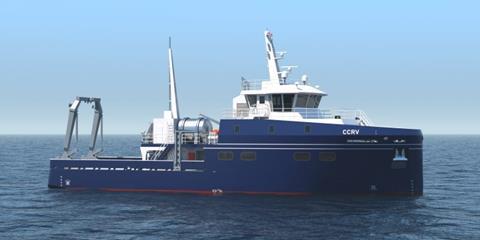UC San Diego’s Scripps Institution of Oceanography has selected Glosten as the naval architect for the university’s new hydrogen-hybrid research vessel.
The vessel will feature a hybrid propulsion system that integrates hydrogen fuel cells alongside a conventional diesel-electric power plant, enabling zero-emission operations.
The design is scaled so the ship will be able to operate 75% of its missions entirely using a non-fossil fuel – hydrogen-with only pure water and electricity as reaction products. For longer missions, extra power will be provided by clean-running modern diesel generators.
The anticipated schedule for design and construction includes one year to complete the basic design. Following U.S. Coast Guard approval of the design, the university will select the shipyard where the design will be constructed. Construction and detail design will likely take an additional three years.
California legislators allocated $35 million towards the design and construction of this vessel last summer. When complete, the vessel will serve as a platform for education and research dedicated to understanding the California coast and climate change impacts to the coastal ecosystem.
The proposed 125-foot vessel will be equipped with instruments and sensing systems, including acoustic Doppler current profilers, seafloor mapping systems, midwater fishery imaging systems, biological and geological sampling systems, and support for airborne drone operations.It is envisioned that the vessel will carry up to 45 students and teachers to sea on day trips, improving the university’s capacity for experiential learning at sea. The new vessel will replace research vessel Robert Gordon Sproul, which is nearing the end of its service life.






